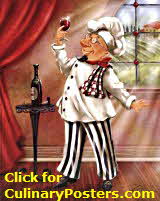See also new article: Origin of Chango Mezcalero Uncovered
Chango Mezcalero: Pottery Mezcal Bottle from Oaxaca
Oaxacan Clay Spirits Container Has a Curious History in San Bartolo Coyotepec
Chango Mezcalero has become a very collectible folk art item whose history has been recounted infrequently, if at all. While by all accounts it originated in the State of Oaxaca, home of mezcal – the spirit distilled from the baked, then fermented agave plant – it’s now highly sought after by collectors residing much further abroad.
The story of Chango Mezcalero may provide a link between the grey, functional pottery produced in Oaxaca’s San Bartolo Coyotepec initially during pre-Hispanic times, and the area’s contemporary black pottery or barro negro. Black pottery is stated to have resulted from the 1952/53 innovation of now famous Zapotec native potters, Doña Rosa Real and husband Don Juventino Nieto.
 What Exactly is Chango Mezcalero, the Curious Monkey-Shaped Mezcal Bottle?
What Exactly is Chango Mezcalero, the Curious Monkey-Shaped Mezcal Bottle?
Chango Mezcalero is a clay receptacle in the shape of a monkey, often painted in brilliant colors, traditionally used for mezcal. In modern times the monkey shape has been manufactured as mainly decorative folk art, sometimes unpainted yet with detailed etching into the grey clay, occasionally bottomless and without a spout since it’s not intended for serving liquid.
The traditional Chango Mezcalero was used to hold, display and / or gift mezcal for imbibing, and hence the name. The clay bottle is just that, usually with a stopper made of cork, or a small piece of corn cob.
Some of the more common poses of the monkey include eating or simply holding a banana, arms across the chest, and one hand in front with the other covering an eye.
Chango Mezcalero served both the tourist and local trade. It’s encountered with Recuerdo de Oaxaca (Souvenir of Oaxaca) written on the back; and sometimes as a pair, with the name of a man painted on the front of one figure and of a woman on the other, suggested local use as personalized gifts – for weddings, anniversaries, birthdays and other rites of passage. Sometimes it’s found painted, yet with no inscription, by no means unusual since its original function was as a combined adornment and serving bottle kept on the shelves of cantinas.
Chango Mezcalero´s size is usually between 8” and 9.5” in height. The traditional forms hold between about 700 ml and 1 liter, respectively.
Linking Barro Negro and Chango Mezcalero in an Historical Context
Eighty-year-old Don Valente Nieto, sole surviving progeny of Doña Rosa and Don Juventino, states that anyone else in his hometown of San Bartolo Coyotepec who maintains that they or their deceased relatives were the creator of Chango Mezcalero, is mistaken or misstating fact. He believes that his father, a highly talented sculptor, was the innovator of not only Chango Mezcalero, but other fanciful clay vessels used for holding mezcal.
Don Valente reveals that it all began when cantina operators from Oaxaca – first one, followed by others – started coming to the Nieto-Real homestead, requesting the chango bottle for keeping, displaying and selling mezcal. Eventually other animal forms were requested and produced. While the gifted Don Juventino created those different shapes as well, Chango Mezcalero gained notoriety.
Don Valente notes the clay molds of the chango, mermaid, stylized owl and more, tucked away as mementos of his father’s legacy. He points to vintage photos of his parents alongside such figures waiting to be placed in a rudimentary in-ground oven for baking. Don Juventino died in 1973, at 70 years of age, while Doña Rosa died some seven year later, at 80.
Indeed Don Valente’s parents are the acknowledged innovators of barro negro, the shiny black pottery now providing the livelihood for most townspeople in San Bartolo Coyotepec. In fact Nelson Rockefeller was an admirer of Doña Rosa and her barro negro, and himself had a substantial collection of her work. Before the early 1950s innovation of black pottery, and dating to pre-Hispanic times, villagers were producing only utilitarian grey clay pieces such as San Bartolo’s noted cantaro form.
An alternate version of the origin of Chango Mezcalero comes from the San Bartolo Coyotepec family of Marcelo Simon Galan, deceased. His granddaughter advises that her abuelo used to go on trade routes with his grey clay pieces including water bottles and pitchers. She continues that someone once asked him to make a monkey form, he complied, and then orders began to come in from others. He worked with the clay, while others did the painting.
With further investigation more facts will hopefully emerge which may lead to additional credence being given to this version of the origin of Chango Mezcalero. For what it’s worth, one of Don Marcelo´s changos is on display at the Museo de Arte Popular de Oaxaca in San Bartolo Coyotepec.
Nowithstanding the foregoing, and subject to further information coming to light, if the Nieto-Real family was the creator of barro negro, now coveted by collectors of Mexican crafts across the globe, is it too far a stretch to suggest that perhaps the same family was the innovator of Chango Mezcalero? As to why initially a chango, perhaps there’s a relationship between the black-faced, monkey-feautured Memin Pinguin Mexican comic book character, and the origins of Chango Mezcalero.
Cautionary Notes:
Concerning the History and Significance of Chango Mezcalero
The foregoing is hypothesis, based on partial oral histories and an examination of various vintage and contemporary pieces. While some would discount the validity of oral histories vis-à-vis Oaxacan studies, they remain an important methodology for piecing together information including chronology; sometimes complementing, while at other times being the only viable research tool yielding results.
When examining the relationship between the development of pre-Hispanic pottery traditions, barro negro and Chango Mezcalero, one must keep at least three points in mind:
• The richness, diversity and multitude of pre-Hispanic art-forms developed in the central valleys of Oaxaca, as evidenced in, amongst other places, Oaxaca’s Rufino Tamayo Museum of Pre.Hispanic Art;
• Two oral histories exist in San Bartolo Coyotepec regarding the origins of Chango Mezcalero, and more may come to light (or perhaps have already been told), with the distinct possibility that there may never be any definitive answer – and perhaps development began at roughly the same time, at different workshops;
• There may indeed be physical evidence disputing the foregoing stories of the origin of Chango Mezcalero, and in fact close examination of bottles suggests that at some point in time it was produced using a different clay than that used for making barro products in San Bartolo Coyotepec.
Despite these and other caveats, the little, often colorful monkey-shaped mezcal bottle known as Chango Mezcalero, provides historians with fruit for further research, and folk art collectors with at least provisional answers to their queries.
Alvin Starkman has a Masters in anthropology and law degree from Osgoode Hall Law School. Now a resident of Oaxaca, Alvin writes, takes tours to the sights, is a consultant to documentary film companies, and owns Casa Machaya Oaxaca Bed & Breakfast (http://www.oaxacadream.com ), a unique Oaxaca bed and breakfast experience, providing Oaxaca accommodations which combine the comfort and service of Oaxaca hotels with the personal touch of quaint country inn style lodging.
 What Exactly is Chango Mezcalero, the Curious Monkey-Shaped Mezcal Bottle?
What Exactly is Chango Mezcalero, the Curious Monkey-Shaped Mezcal Bottle? 

